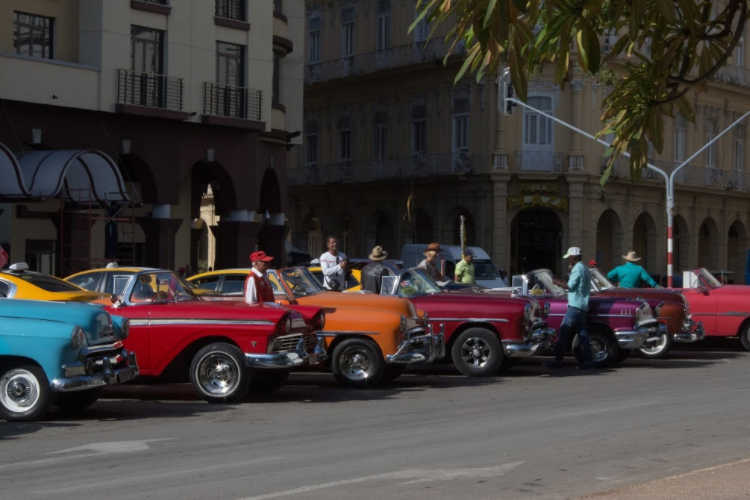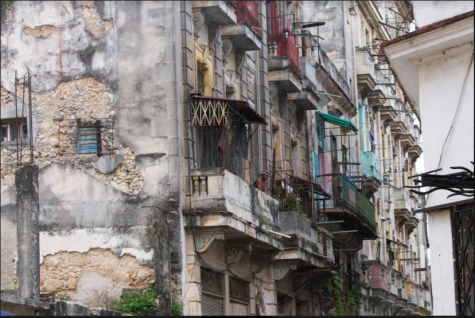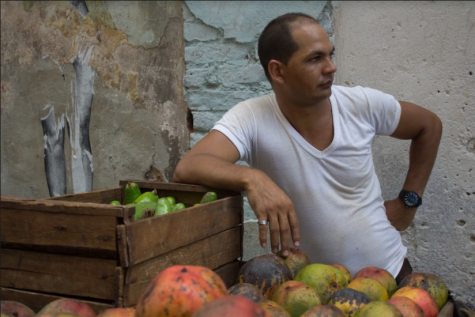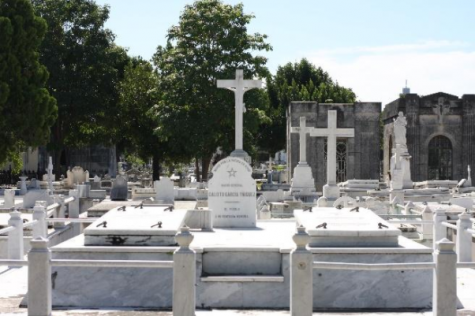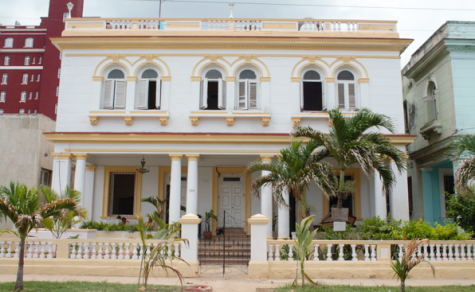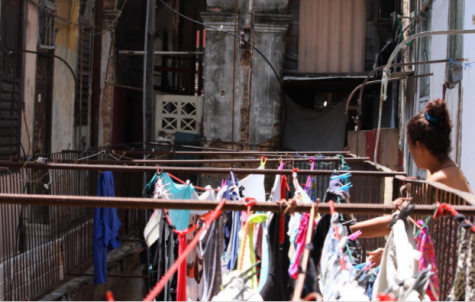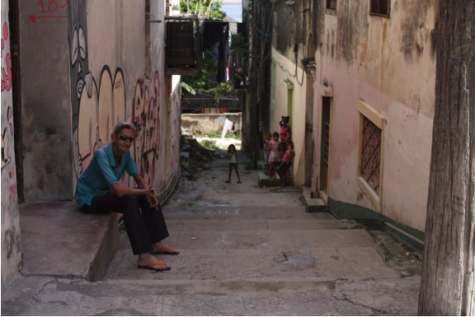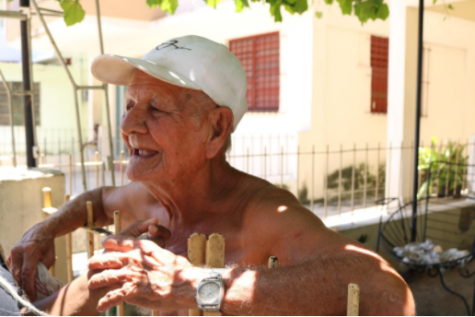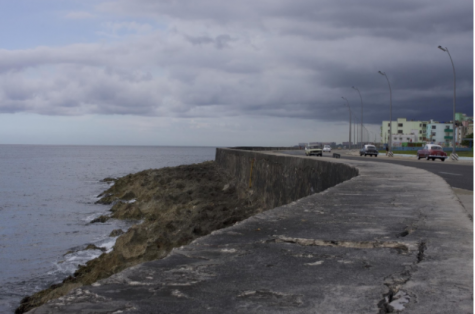Peter Wang
August 27, 2017
How I met Andy
I just can’t believe I oversleep at the very beginning of our trip to Cuba, the first day in Cuba, the first morning in Cuba. I missed my first breakfast in Cuba, I let slip my first time to hang out with my friends and schoolmates in Cuba, I lost the chance to have a fantastic tour of the Havana city as a group. All these happened because of my dead phone without a proper charger.
When I was still in the mood of regretting how stupid I was and I could have the chance to get up early in the morning, the other voice in my head keeps saying, “Go get an adaptor to charge your phone! Go! Go! Go!” So I left the hotel room as soon as possible and headed to the “mall” our teacher showed me yesterday. I cannot see that building as a mall if under the American standard. There were lots of plants inside the mall with limited numbers of stores, most of which were perfume stores. Yes, people in Cuba love wearing perfume. I think the reason is that the hot moist weather makes them wear different kinds of perfumes to cover the smell of their sweat. After all, Cuba
is in a tropical area.
Unfortunately, I could not find the place to buy an adaptor. I was a little blue as I walked down the big street along the beach line, enjoying the great view of sea and cloud. Suddenly, I heard somebody shouting at me, “Hey, China. Tour. Wanna a ride?” I thought this guy even has a stronger accent than I do! It was some taxi drivers trying to find customers. He must recognize me as Chinese. I ignored it and kept walking. The trick was old. The selling was not
that smart. I won’t buy it. However, the thought of having a tour of the city by myself came to my mind. The only problem was choosing the right ride and the right person to go with. At this moment, the same voice came into my ears again, but this time with totally different words: “Hey Comrade! Chinese comrade. Chairman Mao!” Now, this got my interest. Though the word “comrade” was even dying in China quickly, the very moment I heard this familiar and historic calling, I still had this strong mixed feeling. I had no idea why I have resonance with this word
since I was born in 1993 and this address obviously came from old Chairman Mao’s time. I just got touched and moved a little bit. No matter what’s gonna happen next I knew I had to follow that voice and talk to that man to find some answers.
So I stopped and looked back, searching for the man. I saw a short, middle-aged man with brown skin, wearing a wheat hat, standing next to a red 1959 Ford Costume convertible car. He walked to me quickly, offering his big firm hand to me and said, “Hi, nice to meet you. My name is Andy.”
Andy’s car
“Hi, nice to meet you. My name is Andy.” The man with a firm but offensive hand-shake like Donald Trump did always leave people with a good impression. Andy did it. The first word I spoke to him was “Comrade?” Then I supplied, “Was it a really old calling now? Few people in China use that word to call people.” Andy smiled very hard and said “Yes, yes it’s really old now. And we don’t even use it in Cuba now. But I got your attention, and now here we are.”
Ok, Andy is a little bit crafty.
He tried so hard to sell me his tour in his old but eye-catching red car. He even gave me a huge discount just because I’m Chinese. In the end, 50 CUCs for two hours touring around Havana and to bring me back to the hotel. It’s half price compared to American tourists, based on his words. I did not care about that part too much, actually, because my attention had already been caught by his car. It was a Ford Costume 1959 convertible. Andy’s grandfather bought it first. This car was modified for racing once in the late 1990s when the car was carried by his father after his grandfather’s death. But the original engine and driving system could not handle the complicated and serious driving situation like racing so his father modified the car by himself.
He changed the original Ford gearbox with a second-hand Volks one, which impressed me so much that no one expected the original Ford gearbox could work for almost 40 years with few repairing times. It was amazing. However, racing in Cuba is illegal and they had to race at 2 or 3 o’clock in the morning and out of towns to avoid police chasing. The car was crashed once and the engine and gearbox were totally broken as well as the two driving front axles. During 2010, Andy took the car from his father and modified it with a civilian motorcycle engine from Russia and second-hand civilian standard driving system from China. He changed this car to a taxi, to a slow, smooth spark-safe car just for carrying people around.
The other thing changed with his car is his character. Andy said he used to be party boy all the time and didn’t work at all, but now he drives a slow, big car like a boat. He works very hard to build a better future for himself.
Behind Andy’s car
Andy modified his car with Russian engine and Chinese driving system, two countries which are obviously not in the mainstream car-modification market in the world, especially Russia. In the United States, if you ask somebody where all your modified parts on your car came from, one-third of people say a Japanese brand’s name, one-third of people say some European (mostly German) manufacturers, the others just mumble “local” or “Made in China.” That means two things. One thing is that the part definitely comes from a Chinese racing company or factory. The other is that the part is a cheap copy by a small Chinese company.
Besides changing the engine and gearbox with second-hand parts, another important way to modify the old car in Cuba is rebuilding the engine and enhancing the parts. Talking about rebuilding engines, one of the important steps to do that is boring cylinders. The reason to bore the cylinder is that there would be lots of scratches inside the cylinder after driving for years. It’s a really normal thing and happens in almost every car due to the fast vertical movements of plungers inside the cylinders.
The boring process is not difficult or expensive if the cylinders are from last ten or fifteen years because all the procedures to achieve the goals are made based on modern industrial mass-production standard. However, these cylinders came from the 1950s and were made by No. 45 raw steel, which is a really heavy and old material with high intensity. And the numbers of these cars and parts are really limited. So the price to rebuild is really high. If it happened in the US or another mature marketing country with perfect labor union system, these rebuilding
processes are not as expensive.
To keep the intensity of iron qualified for the cylinder, the foundry processes a heat treatment before shaping. During this process, a whole new cylinder is born. It’s not a hard thing to do for a huge industrial country like the US or China. It’s also cheaper for the US or China’s manufacturers to just build a new one rather than rebuilding the old one because, when boring the cylinders, the old plungers and plunger rings also needed to be changed because the meet between plunger and cylinder change after boring.
And this is only one step of rebuilding an engine.
That means rebuilding an engine is way more expensive than buying a new one. Why do lots of Cuban people still insist on rebuilding engines rather than exchanging them? How did they do these works without abundant choices in engineering tools and knowledge? Where did they find parts and tools to achieve these works since the market is small and closed, especially in later decades?
Number one mechanic in Havana
Ramon is known as the best mechanic in Havana, especially in fixing old cars. His specialty is in iron and steel. The classification of his skill by material is really not professional as an engineer, but the reason I do this is that Ramon can only deal with steel. He has his own lathe, an old turning-lathe, a stand-driller and a non-digital but whole functional working center in his private workshop. He has welding tools as well. However, all these can only work with steel, which means he is a really old-school traditional mechanic that cannot handle new cars with countless composite material body and aluminum structure parts, not to mention the electric cells around the cars.
Ramon is a really nice old man. When I first time met him, I tried to shake hands with him, but he was holding a brake full of greasy dirt and oil, so he elbow shakes with me instead, smiling like a child. I thought he was a funny guy and smart, too. The driver, also my translator, told me that Ramon is the best mechanic in Havana, top three in Cuba. Neighbors cannot remember how many cars Ramon fixed, but they know how many cars are parked outside Ramon’s workshop, waiting for him to take a look at them. Ramon only works three days a week. He is only 50, but using his words, “I’m old now. I wanna enjoy my life and have more time with my family.”
I know Ramon is a man with lots of stories. Based on his age and only five years of his private car-fixing business, he must have had a long time of working experience at a Cuban government factory or manufactory. Besides, most of the skills that he relies on today are learned from that experience. Now he runs a private workshop with big name and popularity while the location of the workshop is in a really out-of-the-way place far from the city of Havana. That means stories happened to this man. I deduced this by using China’s history as a model. Before the Chinese open policy in 1979, all mechanics belonged to the government and they could not have private business because it was illegal back then. The socialist-planned economy did not allow people to own private businesses, especially people with skills like engineers, mechanics, scientists and so on. The government did not pay these people a lot; they got paid as much as a security guard. The prime minister and a scientist had a same level of salary because they are all laborers.
Thinking about these, I started my conversation with Ramon. I knew I was right, this man had stories.
The amazing 1957 Cadillac
I just cannot believe my eyes when I watched Bob open the hood of his 1957 Cadillac in Jose Martin Memorial Square. If somebody tells you there is a car that can still run almost perfectly after 60 years, what is your reaction? If this guy adds there was no rebuilding or big changes on the combustion engine, what are you going to say about it? My answer was opening my mouth too long to feel my mouth anymore.
I was floored. It’s unbelievable.
The only thing Bob did under the hood was changing the electronic starter and strengthening the pulley drive by using new material. This modification realizes the new Line-8 engine-assembly drive stapler and ensures the stapling strength and quality by converting the rotation of drive belt pulley into the plane curve movement of the pivot bolt. Due to the limitedness of the age, the Line-8 cylinders engine can only produce 100 horsepowers, but it’s still good enough to drive; it’s almost 3000 kilograms. “It’s the only one in Havana. And I don’t believe you can find
“It’s the only one in Havana. And I don’t believe you can find a second one in another part of Cuba.” Bob was extremely proud of his car while he talked about it. “No one else in Cuba has engine like this old and works this well. Mine is the only one. No rebuilding, no changes. They are all American.”
I have to confess that I have more respect for the Cadillac engineers that designed and assembled this car 60 years ago. It reminds me of the Geely cars we can see all around Havana. Lots of their engines have to be repaired or rebuilt after no more than 10 years. Although this Chinese car manufacturer came to Cuba with big ambitions, the quality difference can tell lots of stories in silence. Bob told me the secret of keeping this car so good in the past 60 years was “driving like my grandmother.”
Without a doubt, driving slow is a really good solution to protect a car, especially an antique car. However, the amazing manufacturing, quality control and manufacturing excellence of Cadillac have a louder voice. Back 60 years, a local American car manufacturer already had rational product design, sophisticated production equipment, advanced manufacturing processes and improved quality of the system. All of these maintain this grandpa’s car running like a new one today. Cuba can fix and rebuild, China can make the same thing but at a second-rate quality, but the United States still makes the perfect work.




